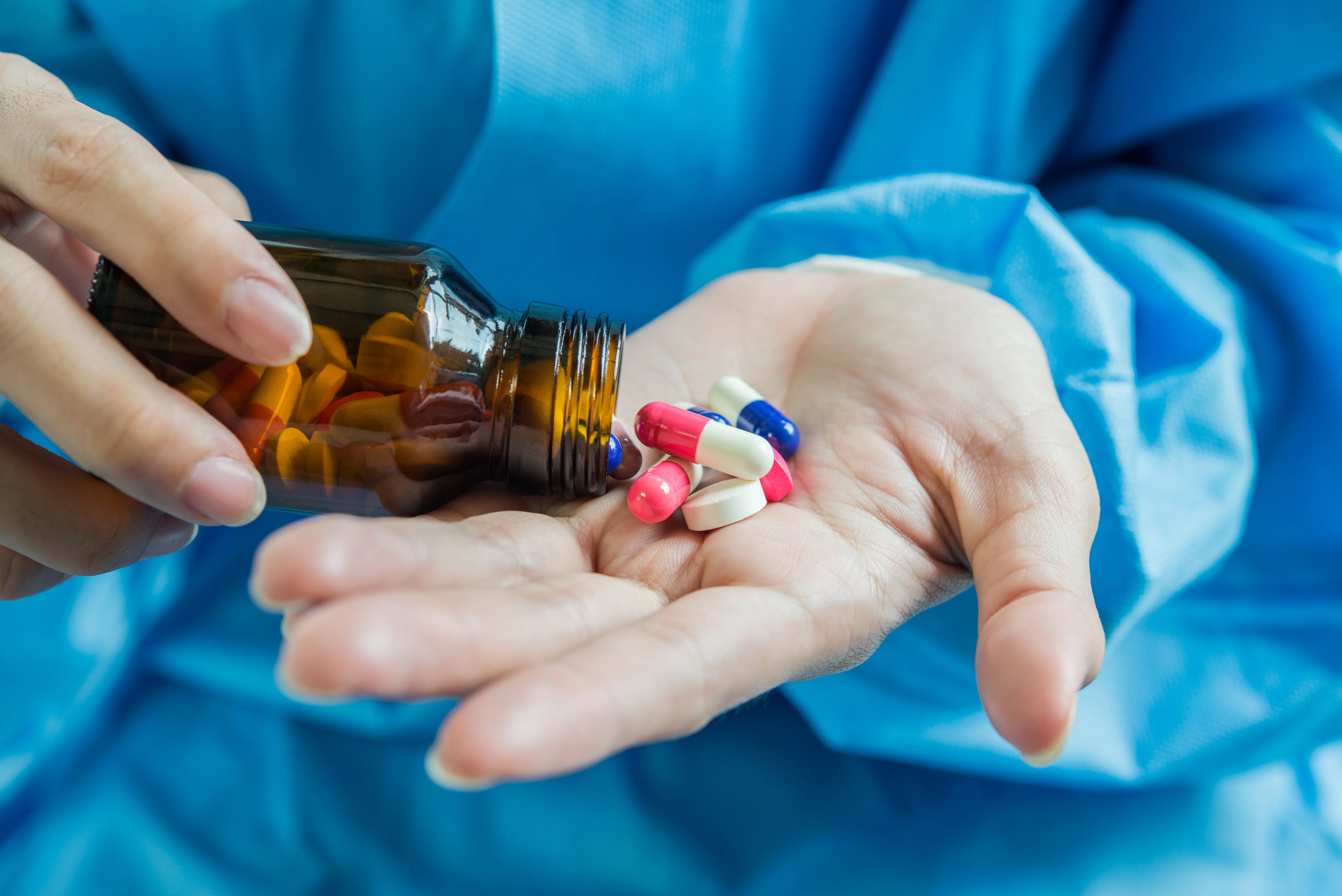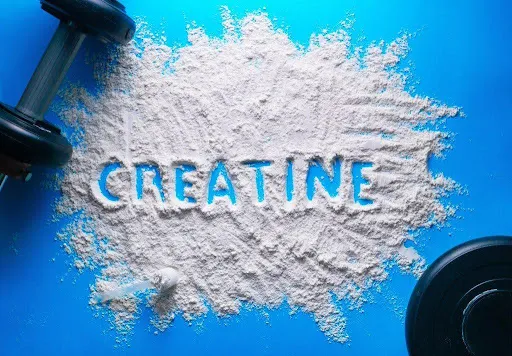|
Creatine can cause temporary bloating in some users, mainly during high-dose loading. |
Ever felt your midsection puff out after starting a new supplement? For some, that’s exactly what happens with creatine. The talk around “does creatine make you bloated” isn’t just gym gossip. Some swear it’s all water weight.
Others claim it’s a myth. The truth? It’s more complicated than a yes or no. Let’s break down what’s really happening in the body, why certain people notice bloating, and how to manage it without giving up the performance benefits creatine is known for.
What Science Says About Creatine and Bloating
The idea of “creatine bloat” mostly comes from the way the body stores it. However, longer-duration studies show that although TBW increases, the ratio of ICW to ECW does not significantly change once muscles are saturated. Fluid distribution returns to normal as the body adapts. Creatine molecules pull water into muscle cells. That’s intracellular water, not fat. This is why some people notice a sudden increase in scale weight within the first week.
(2017) findings in the Journal of the International Society of Sports Nutrition show that high-dose loading, 20 grams daily for 5–7 days, significantly increases muscle water content. While this can cause a visible change in muscle fullness, some individuals also feel abdominal pressure or mild gastrointestinal discomfort.
Fluid shifts happen quickly during loading. In a controlled 4-week high-dose creatine study, participants showed an average increase of approximately 3.4 liters of total body water. If creatine isn’t fully dissolved before consumption, it can linger in the gut, drawing water into the intestines and causing a bloated sensation. This is why some switch to micronized forms or lower doses to avoid it.
Does Creatine Make You Fat? No — And Here’s Why.
Creatine does not increase fat. The weight gain is water inside muscle cells.
If there is visible belly enlargement, it is fluid, not fat tissue.
-
Fat gain requires a calorie surplus over time
-
Water weight increases can happen in days
Therefore: Creatine belly bloat ≠ belly fat.
Why Creatine Can Cause Bloating (and Why It Does Not Happen to Everyone)
Creatine pulls water into muscle cells. This is how it works. Short-term research shows that total body water (TBW), intracellular water (ICW), and extracellular water (ECW) all increase during the first few days of creatine use, especially when the dose is high. The water is drawn inside the cells (intracellular water), which increases muscle hydration and performance. This is not body fat. This is not permanent swelling. This is muscle cell hydration.
However, during high-dose loading, the water shift happens quickly. Some users feel heavy or full in the midsection or face.
The Important Scientific Details:
-
Short-term research shows an increase in total body water (TBW) as well as changes in intracellular water (ICW) and extracellular water (ECW) during the first days of supplementation
-
However, long-term studies do not show a significant change in fluid distribution relative to muscle mass. Once muscles adjust, the water balance normalises.
-
In one clinical example, a high-dose creatine subject gained ~4.8 kg in the first week, and ~90% of that was water, not fat.
-
Another controlled trial recorded ~3.4 L increase in total body water over 4 weeks of high-dose usage.
Meaning: the bloat is temporary, especially if loading is involved.
If you avoid loading and directly take 3–5 grams daily, bloating is far less common.
Factors That Influence Whether You’ll Feel Bloated
Bloating from creatine isn’t inevitable. Four main factors can decide if you’ll notice it or not.
1. Dosage and Loading Phase
Loading means taking around 20 grams per day, split into 4–5 doses, for a week before moving to a 3–5 gram maintenance dose. This floods the muscles quickly but also increases the chance of creatine sitting in the gut, pulling water toward it.
Skipping loading and starting directly with 3–5 grams daily saturates muscles more slowly but often avoids bloating. For those asking, “why does creatine make you bloated?” the loading phase is usually the culprit.
In one documented loading case, a subject gained around 4.8 kg in the first week of creatine use, and nearly 90% of that weight gain came from water rather than fat
2. Creatine Type (Monohydrate vs. Micronized)
Creatine monohydrate is the gold standard for research, but it’s also the form most linked to complaints about bloating. Micronized creatine is essentially the same compound but processed into smaller particles, allowing it to dissolve more completely and absorb faster.
Some users also try creatine hydrochloride (HCL) or buffered versions, claiming less water retention. While research isn’t conclusive on whether one type truly eliminates bloating, the finer powder of micronized creatine vs. monohydrate bloating reports often suggest better digestion for sensitive stomachs.
3. Hydration Levels and Sodium Intake
Creatine increases the body’s demand for water. If you’re not drinking enough, muscles still pull water in, leaving less for other tissues. This imbalance can cause cramping and discomfort.
High sodium intake can amplify visible puffiness, especially in the face. So, for those asking “does creatine make your face bloated,” it might be a combination of water shifts and dietary salt. Lowering sodium while staying hydrated may reduce both facial and abdominal bloating.
4. Individual Body Response
Some bodies simply adapt differently. Gut sensitivity, pre-existing digestive issues, or even the time of day you take creatine can alter your experience. People with slower digestion may notice more water pooling in the intestines, creating that “does creatine make your stomach bloat” feeling.
Creatine Types and Bloating Potential
|
Creatine Type |
Dissolution Speed |
Common Bloating Reports |
Notes |
|
Monohydrate |
Moderate |
Higher |
Most studied, effective, and affordable |
|
Micronized Monohydrate |
Fast |
Lower |
Smaller particles may ease digestion |
|
Creatine HCL |
Very fast |
Lowest |
More soluble; less research |
|
Buffered Creatine |
Fast |
Lower |
Claims reduce stomach discomfort |
How to Reduce Creatine Bloating Safely (Simple, Effective Steps)
-
Skip the Loading Phase: Go straight to 3–5 grams daily. Saturation will take longer, but it avoids sudden water shift.
-
Choose Micronized or HCL: Finer texture → dissolves better → less gut pull.
-
Mix Properly, Take With Meals: Warm water + shaking helps full dissolution. Meals improve gut absorption.
-
Hydrate Steadily: Not 2 liters at once. Spread intake across the day.
-
Reduce Sodium If You Notice Face Puffiness: You may see a visible change within a week.
-
Split Doses: Take half morning + half evening. Avoids sudden gut load.
Small trick that works well: Take creatine with your largest carb meal. Carbs improve creatine transport into muscle → less residue in gut → less bloating.
Who Should Be Cautious When Taking Creatine?
Creatine is mostly safe for healthy adults, but some ought to be more cautious, such as:
-
Patients with kidney disease or those with reduced kidney function.
-
Individuals at risk for severe gastrointestinal distress.
-
People who have sensitivity to water weight fluctuations, such as those in weight-class sports.
If some symptoms like persistent cramping arise along with bloating that lasts beyond a week, it’s best to stop using creatine and consult a healthcare professional.
Conclusion
So, does creatine make you bloated? Sometimes, but it’s not a given. How much you take, the form you use, and your daily hydration can make all the difference. It’s mostly water moving into muscles, not fat. For most, the benefits in strength, recovery, and performance outweigh the short-term puffiness.
أسئلة متكررة
Does creatine bloating go away?
Yes. Once muscle stores are saturated and your body adjusts, bloating usually subsides within 1–2 weeks, especially if you switch to a maintenance dose.
How to reduce creatine bloating?
Lower your dose, skip loading, choose micronized creatine, hydrate well, and reduce sodium. These steps often help minimize discomfort.
Does creatine cause belly fat?
No. The weight gain is from water retention in muscles, not increased fat tissue. It’s temporary and reversible.
Creatine bloating for how long?
For most, any bloating lasts a few days to a week during loading, then eases once you move to maintenance dosing.
How to take creatine without bloating?
Use 3–5 grams daily, dissolve fully, drink with plenty of water, and spread the dose into smaller portions throughout the day.
-User-1754380331.png)
كُتب بواسطة







